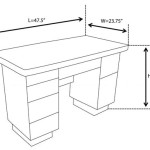Best Vegetables for Partial Shade Gardens
Many home gardeners face the challenge of limited sunlight. Establishing a thriving vegetable garden can seem impossible if the available space receives less than six hours of direct sunlight daily. However, numerous vegetables can tolerate and even flourish in partial shade, defined as four to six hours of sunlight per day, or dappled sunlight throughout the day. Careful selection of these shade-tolerant varieties allows for productive harvests even in less-than-ideal conditions.
When planning a partial shade vegetable garden, it is crucial to understand what constitutes "partial shade" in your specific location. The intensity and duration of sunlight can vary based on latitude, the season, and surrounding structures like buildings and trees. Observing your garden space throughout the day will provide a clear picture of the amount of sunlight it receives. This information will guide the selection of appropriate vegetables and their placement within the garden.
Furthermore, soil quality is paramount for success in any garden, including those in partial shade. Shade can slow evaporation, potentially leading to perpetually damp soil. Ensure adequate drainage by amending the soil with compost, well-rotted manure, or other organic matter. This will prevent waterlogging and promote healthy root growth. Regularly testing the soil's pH level is recommended to ensure it is within the optimal range for the chosen vegetables.
Leafy Greens Thrive in Partial Shade
Leafy greens are generally well-suited to partial shade conditions. They require less direct sunlight compared to fruiting vegetables and often benefit from the cooler temperatures associated with shaded areas. This can extend their growing season, delaying bolting (premature flowering) which can make leaves bitter. Examples of leafy greens that perform well in partial shade include:
Lettuce: Many varieties of lettuce, such as romaine, butterhead, and loose-leaf types, tolerate partial shade. They can be sown directly into the garden bed or started indoors and transplanted. Regular harvesting of outer leaves encourages continued growth.
Spinach: Spinach prefers cooler temperatures and thrives in partial shade. It is a fast-growing crop that can be harvested multiple times. Ensure adequate moisture to prevent bolting, especially during warmer periods.
Kale: Kale is a highly adaptable leafy green that tolerates a wide range of conditions, including partial shade. It is relatively cold-hardy and can be grown in both spring and fall. Regular harvesting of lower leaves promotes continuous production.
Arugula: Arugula, also known as rocket, is a peppery green that thrives in cool weather and partial shade. It is a fast-growing crop and can be harvested within a few weeks of sowing. Avoid overwatering, as this can lead to leggy growth.
Swiss Chard: Swiss chard is a colorful and nutritious leafy green that tolerates partial shade. It is relatively easy to grow and can be harvested continuously throughout the growing season. The colorful stems add visual interest to the garden.
When planting leafy greens in partial shade, consider their spacing needs. Overcrowding can reduce air circulation and increase the risk of fungal diseases. Ensure adequate spacing between plants to promote healthy growth and maximize yields. Monitor regularly for pests such as aphids and slugs, and take appropriate measures to control them.
Root Vegetables Adapt to Reduced Sunlight
While root vegetables generally prefer full sun, some varieties can still produce respectable yields in partial shade. The key is to choose varieties that mature quickly and provide them with well-drained soil. Examples of root vegetables suitable for partial shade include:
Radishes: Radishes are one of the fastest-growing root vegetables, making them an excellent choice for partial shade gardens. They mature in as little as 20-30 days and can be planted multiple times throughout the growing season. Choose early-maturing varieties for best results.
Carrots: Carrots can tolerate partial shade, though they may take longer to mature and produce smaller roots. Choose shorter, rounder varieties, such as Nantes or Chantenay, as they tend to perform better in less-than-ideal conditions. Ensure loose, well-draining soil to prevent misshapen roots.
Beets: Beets can tolerate partial shade, although they may produce smaller beets than those grown in full sun. Both the beetroots and the beet greens are edible and nutritious. Thin seedlings to ensure adequate spacing for root development.
Turnips: Turnips are a fast-growing root vegetable that can tolerate partial shade. Both the turnips and the turnip greens are edible. Choose early-maturing varieties for best results. Ensure adequate moisture to prevent the turnips from becoming woody.
When growing root vegetables in partial shade, pay close attention to soil preparation. Loose, well-drained soil is essential for proper root development. Amend the soil with compost or other organic matter to improve its texture and fertility. Avoid overcrowding and provide adequate spacing between plants to allow for sufficient root growth.
Fruiting Vegetables with Shade Tolerance
While most fruiting vegetables require full sun to produce abundant harvests, some varieties can still produce fruit in partial shade. The yield may be lower compared to those grown in full sun, but with careful selection and proper care, it is still possible to enjoy homegrown fruits in a partially shaded garden. Examples of fruiting vegetables that exhibit some shade tolerance include:
Peppers: While peppers prefer full sun, some varieties, particularly those of the sweet pepper type, can tolerate partial shade. Expect a reduced yield compared to plants grown in full sun, but still anticipate some fruit production. Choose compact varieties that are known to mature quickly.
Tomatoes: Similar to peppers, tomatoes thrive in full sun, but certain varieties can tolerate partial shade. Consider early-maturing, determinate varieties (bush types) as they tend to produce fruit more quickly. Provide support for the plants with stakes or cages to prevent them from sprawling and becoming susceptible to diseases.
Eggplant: Eggplant generally requires full sun, but some varieties can tolerate partial shade. Opt for smaller-fruited varieties, as they tend to mature more quickly. Provide consistent moisture and fertilize regularly to encourage fruit set.
Beans: Bush beans can tolerate partial shade better than pole beans. Choose early-maturing varieties and provide support if needed. Regular harvesting encourages continued production. Ensure well-drained soil to prevent root rot.
When growing fruiting vegetables in partial shade, consider providing supplemental light if possible. This can help to increase fruit production and improve overall plant health. Use grow lights or reflective materials to maximize the amount of light the plants receive. Additionally, ensure adequate ventilation to prevent fungal diseases, which can be more prevalent in shaded areas.
Selecting the right varieties is only one part of the equation. Consistent watering is essential, especially during dry spells. Shade can reduce evaporation, but it is still important to monitor soil moisture levels and water when necessary. Overwatering can be just as detrimental as underwatering, so aim for consistent moisture without waterlogging the soil.
Fertilizing regularly will also help to support healthy growth and fruit production in partial shade conditions. Use a balanced fertilizer or one specifically formulated for vegetables. Follow the manufacturer's instructions for application rates and timing. Consider using organic fertilizers, such as compost tea or fish emulsion, to provide a slow-release source of nutrients.
Finally, consistent monitoring for pests and diseases is crucial for maintaining a healthy vegetable garden in partial shade. Shade can create a more humid environment, which can be conducive to fungal diseases. Regularly inspect plants for signs of pests or diseases and take appropriate measures to control them. Employ organic pest control methods whenever possible to minimize the impact on beneficial insects and the environment.

Shade Tolerant Vegetables Portland Monthly

Shade Tolerant Vegetables To Grow Mr Fothergill S Latest Help Advice

Vegetables Herbs Flowers That Grow In Shade 5 Tips For Gardening Growing The Garden

30 Vegetables That Grow In Shade

Shade Tolerant Vegetables Vs Sun Friendly Veggies

Vegetables To Grow In Shade Growing Tips And Garden Plans The Old Farmer S Almanac

30 Vegetables That Grow In Shade

Shade Tolerant Vegetables Vs Sun Friendly Veggies

Vegetables To Grow In Shade Growing Tips And Garden Plans The Old Farmer S Almanac

30 Vegetables That Grow In Shade








